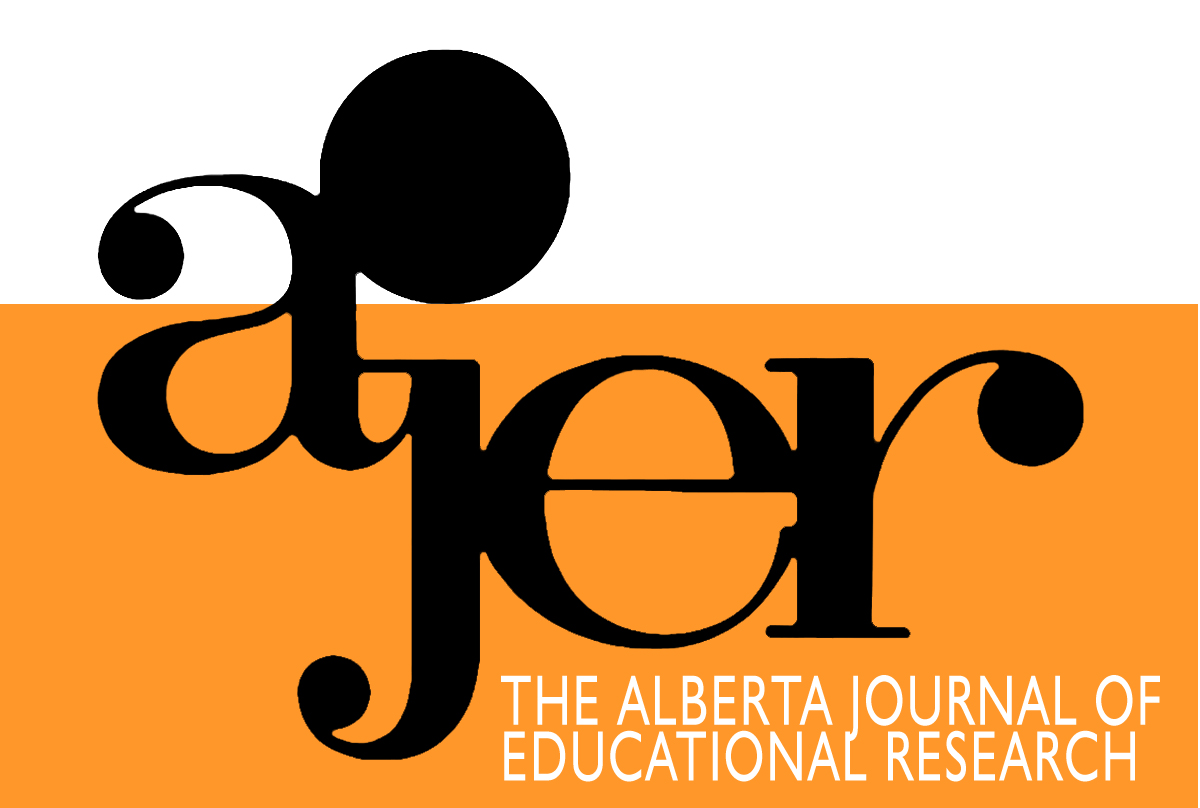Attributional Beliefs of Canadian Trainee Teachers toward Students with a Learning Disability
DOI:
https://doi.org/10.55016/ojs/ajer.v60i1.55808Keywords:
learning disabilities, attribution theory, trainee teachers, expectations, attitudes, Mots clés, troubles d’apprentissage, théorie de l’attribution, stagiaires, attentes, attitudes.Abstract
Teachers are one of the most important factors in successful inclusion of students with a learning disability in mainstream classrooms. Attitudes towards inclusion of certain students in classrooms have been mixed, and many attitudes are often developed during the pre-service training and early teaching years. This study investigated the attitudes of trainee teachers towards students with learning disabilities by analysing their attributional responses to hypothetical students. Accordingly, 181 graduating Canadian trainee teachers were surveyed and the results indicated that as students’ ability levels decrease, teachers’ sympathy levels rise, and the expectation of future failure increases. Moreover, as students’ expended efforts increase, the teacher feedback becomes more positive, the frustration decreases, the sympathy levels rise, and the expectation of future failure decreases. With regards to differences between students with and without a learning disability, as students’ ability levels increase the difference in trainee teachers’ sympathy level increases. Furthermore, as students’ expended efforts increase, the difference in teacher feedback given to students with and without a learning disability decreases, the difference in frustration and sympathy levels decrease, and the difference in expectations of future failure increases. Implications and recommendations for practice and research conclude the paper.
Les enseignants représentent un des facteurs les plus importants pour une l’inclusion réussie des élèves avec des troubles d’apprentissage dans les salles de classe ordinaires. Les attitudes face à l’inclusion de certains étudiants dans les classes sont variées, et plusieurs d’entre elles se sont développées au cours de la formation d’enseignant et les premières années d’enseignement. Cette étude a analysé les biais d’attribution de stagiaires face à des élèves hypothétiques de sorte à étudier leurs attitudes relatives aux élèves ayant des difficultés d’apprentissage. Ainsi, une enquête auprès de 181 stagiaires canadiens au terme de leurs études a indiqué que plus les compétences des élèves baissent, plus les stagiaires éprouvent de la sympathie pour eux et plus ils s’attendent à ce que les élèves échouent. De plus, plus les élèves font des efforts, plus la rétroaction des stagiaires devient positive, plus la frustration diminue, plus les stagiaires éprouvent de la sympathie et moins ils anticipent un échec de la part des élèves. Quant aux différences entre les élèves sans trouble d’apprentissage et les élèves ayant un trouble d’apprentissage, plus les compétences des élèves augmentent, plus la différence dans le niveau de sympathie éprouvée par les stagiaires augmente. En outre, plus les élèves font des efforts, plus la différence dans la rétroaction des stagiaires offerte aux élèves avec et sans un trouble d’apprentissage diminue, plus la différence des niveaux de frustration et de sympathie diminue et plus la différence quant aux attentes relatives aux possibilités d’échec augmente. Des retombées de l’étude et des recommandations relatives à la pratique et la recherche viennent conclure l’article.
Downloads
Published
Issue
Section
License
UNIVERSITY OF ALBERTA COPYRIGHT LICENSE AND PUBLICATION AGREEMENT
If accepted, authors will be asked to sign a copyright agreement with the following points:
A. Where there is any inconsistency between this Copyright License and Publication Agreement and any other document or agreement in relation to the same subject matter, the terms of this Agreement shall govern.
B. This document sets out the rights you are granting in relation to publication of your article, book review, or research note entitled (the “Article”) through inclusion in the academic journal titled Alberta Journal of Educational Research (the “Journal”) published through the Faculty of Education, representing the Governors of the University of Alberta (the “Journal Editor”).
C. There will be no payment to you for this publication and grant of rights. In consideration of the agreement to publish the Article in the Journal:
1. You are warranting that:
- the content of the Article is your original work, and its content does not contain any material infringing the copyright of others; or, where the Article is not entirely your original work, you have obtained all necessary permissions in writing to grant the rights you are giving in this agreement;
- the content of the Article does not contain any material that is defamatory of, or violates the privacy rights of, or discloses the confidential information of, any other person;
- the Article has not been published elsewhere in whole or in part, and you will not allow publication of the Article elsewhere without the consent of the Journal Editor;
- the names of all co-authors and contributors to the Article are:
2. You agree to license the copyright in the Article to the Journal Editor, on a worldwide, perpetual, royalty free basis; and to the extent required by the terms of this agreement. You shall retain the right at all times to be acknowledged as the/an author of the Article.
3. You further agree that the Journal Editor has the entitlement to deal with the Article as the Journal Editor sees fit, and including in the following manner;
- The right to print, publish, market, communicate and distribute the Article and the Journal, in this and any subsequent editions, in all media (including electronic media), in all languages, and in all territories, ing the full term of copyright, and including any form of the Article separated from the Journal, such as in a database, abstract, offprint, translation or otherwise, and to authorize third parties to do so;
- The right to register copyright of the Journal;
- The right to edit the Article, to conform to editorial policy as the Journal Editor sees fit.
4. If any co-author or contributor to the Article does not sign this agreement, the Journal Editor reserves the right to refuse to publish the Article.



